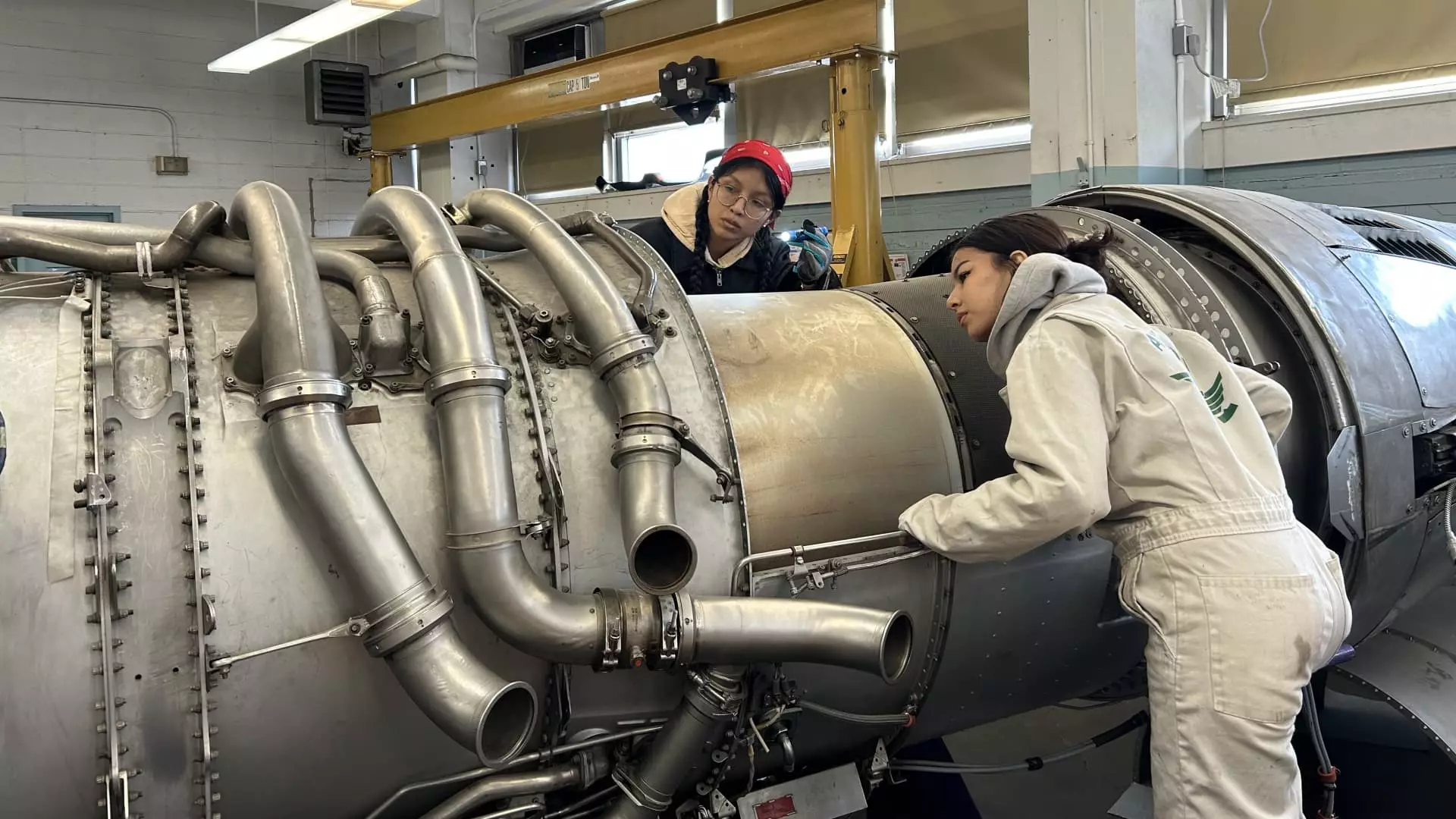The U.S. aviation industry stands at a pivotal juncture, highlighting a significant crisis that could undermine its very foundation. With an alarming projection of a shortage of 25,000 aircraft technicians by 2028, the challenges ahead are daunting. The facts speak for themselves: the average age of certified aircraft mechanics is a sobering 54, with a staggering 40% over 60 years old. Such statistics evoke a sense of urgency that must not be ignored, as these seasoned professionals approach retirement, leaving in their wake a vacuum that could cripple the industry’s operational capabilities.
It’s baffling that, in an age where technological advancements are reshaping industries, we are grappling with an aging workforce that has remained static. This is not merely a failure of foresight; it is indicative of an industry that has failed to adapt and attract younger talent. The pandemic only exacerbated this situation, leading to mass layoffs and severed encouragement toward skills development that could ensure a sustainable response to future demands.
A Fail-Market for Talent
Despite the yearning voiced by industry leaders for a resurgence in manufacturing jobs, the aviation sector finds itself in a paradox: while wages for aircraft technicians are on the rise—median annual salaries now reaching around $79,140—there is still skepticism regarding the allure of these positions. They come with the promise of career advancement; for instance, experienced technicians at American Airlines could command salaries up to $130,000 within nine years. However, perceived geographical immobility and outdated perceptions about manufacturing jobs overshadow these opportunities.
Take, for instance, the insights of Gordon Hanson from Harvard University, who suggests that manufacturing’s difficulties lie in its inability to attract a mobile labor force, particularly when the economic landscape is saturated with alternatives. Young people today are often led to believe that a college degree is the only path to success, often dismissing the vocational and technical fields like aircraft maintenance as second-rate. It is a troubling trend that is more than just a miscalculation; it is a blessing for industries in dire need of skilled workers.
Technological Transformation and Perception Shift
Nevertheless, this crisis presents a unique opportunity for a renaissance in the aviation workforce. Companies like GE Aerospace and American Airlines are championing initiatives aimed at modernizing the image of the aviation trade. The stereotype of the ‘greasy mechanic’ needs to be replaced with one of high-tech, precision-based careers that incorporate cutting-edge technologies, such as laser-guided machinery and specialized materials.
Schools like Aviation High School in New York are leading the charge, offering tailored programs that allow students not only to learn about aircraft maintenance but also to acquire FAA licenses before they even graduate. This proactive engagement with younger generations is vital. The fact that approximately 5,000 students applied to this specialized school this year alone illustrates a budding interest in the field, making it imperative for the industry to capitalize on this momentum.
One could argue that the aviation sector must follow suit by investing in marketing campaigns that paint a brighter picture of careers within the industry. Job fairs and partnerships with educational institutions should be ramped up to stir excitement among potential workers—especially in a world more attuned to digital engagement.
Rethinking Benefits to Attract Talent
While the industry may recognize the need for wage increases, mere financial incentives are insufficient. As Sarah MacLeod of the Aeronautical Repair Station Association notes, the workforce shortage will reverberate across society, and it’s not just aircraft mechanics who will feel this impact. If companies want to cultivate a new generation of skilled technicians, they must rethink their approach to benefits and work-life balance. Offering flexible schedules, mental health support, and career development opportunities could enhance the industry’s appeal significantly.
At the core, the aviation industry must also reckon with its image as an ‘essential’ sector—it’s about ensuring that safety standards remain high while nurturing the next generation of technicians. The need is pressing: failure to address the talent shortage will not just hinder operational capability; it undermines national economic resilience, demonstrating a critical intersection between skilled labor and national security.
We are at a crossroads: the challenge is daunting, yet the potential for renewal is rich. The aviation industry must act decisively to foster a skilled workforce that will not only meet future demands but illuminate a path toward a more dynamic, robust economy. The mingling of technology and skill training is not just an option; it’s an imperative for survival.

